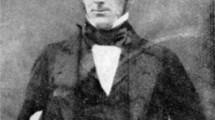Abstract
A variety of tellurium ligands has been designed and studied for their complexation reactions in the last decade. Of these hybrid telluroethers, halotellurium ligands and polytellurides are the most notable ones. RTe-andpolytelluride ions have also been used to design clusters. Ligation of ditelluroethers and several hybrid telluroethers is extensively studied in our laboratories. The ditelluroether ligand RTeCH2TeR (where R = 4-MeOC6H4) (1), similar to dppm [1,2-bis(diphenylphosphino)methane], has been synthesized in good yield (∼80%) by reacting CHCl3 with RTe- (generatedin situ by borohydride reduction of R2Te2). Iodine reacts with1 to give tetra-iodo derivative, which has intermolecular Te.I interactions resulting in a macro structure containing rectangular Te-I.Te bridges.1 readily forms four membered rings with Pd(II) and Ru(II). On the formation of this chelate ring, the signal in125Te NMR spectra shifts significantly upfield (50-60 ppm). The bridging mode of1 has been shown in [Ru(p-cymene)Cl2]](μ-l)[Ru(p-cymene)Cl2]. The hybrid telluroether ligands explored are of the types (Tex, Sy ), (Tex, Ny) and ( Tex,Oy ). The tellurium donor site has strongtrans influence, which is manifested more strongly in square planar complexes of palladium(II). The morpholine N-donor site has been found to have weaker donor characteristics in (Tex, Ny) ligands than pyridine and alkylamine donor sites of analogous ligands. The singlet oxygen readily oxidises the coordinated Te. This oxidation follows first order kinetics. The complexation reaction of RuCl3].xH2O with N-[2-(4-methoxyphenyltelluro)ethyl]phthalimide (2) results in a novel (Te, N, O)-heterocycle, Te-chloro,Te-anisyl-1a-aza-4-oxa-3-tellura-1H, 2H, 4aH-9 fluorenone. The (Te, O) ligands can be used as hemilabile ligands, the oxygen atom temporarily protects the vacant coordination site before the arrival of the substrate. The chelate shifts observed in125Te NMR spectra of metal complexes of Te-ligands have a close parallel to those of31P NMR. For the formation of five-membered rings, the value is positive and of the order of 130 ppm whereas for six-membered rings it is negative and ∼30 ppm only.
Similar content being viewed by others
References
Hope E G and Levason W 1993Coord. Chem. Rev. 122 109
Singh A K and Sharma S 2000Coord. Chem. Rev. 209 49
Singh H B and Sudha N 1996Polyhedron 15 745
Kanatzidis M G and Huang S P 1994Coord. Chem. Rev. 130 509
Beck J 1994Angew. Chem. 106 172
Ansari M, McConnachie J M and Ibers J A 1993Acc. Chem. Res. 26 574
Khalid A and Singh A K 1997Polyhedron 16 33
Drake J E, Yang J, Khalid A, Srivastava V and Singh A K 1997Inorg. Chim. Acta 254 57
Chiffey A F, Evans J, Levason W and Webster M 1994J. Chem. Soc., Dalton Trans. 35
Singh A K, Kadarkaraisamy M, Drake J E and Butcher R J 2000Inorg. Chim. Acta 304 45
Singh A K, Kadarkaraisamy M, Murthy G S, Srinivasa J, Varghese, Butcher R J 2000J. Organomet. Chem. 605 39
Singh A K, Sooriyakumar J, Husebye H and Tornroos K W 2000J. Organomet. Chem. 612 46
Singh A K, Sooriyakumar J and Butcher R J 2001Inorg. Chim. Acta 312 163
Singh A K, Sooriyakumar J, Drake J E, Hursthouse H B and Light M E 2000J. Organomet. Chem. 613 244
Singh A K, Kadarkaraisamy M, MishraM, Sooriyakumar J, Drake J E, Hursthouse H B, Light M E and Jasinski J P 2001Inorg. Chim. Acta 320 133
Levason W, Orchard S D, Reid G and Tolhurst V A 1999J. Chem. Soc., Dalton Trans.2071
Steenwinkel P, James S L, Gossage R A, Grove D M, KooijmanH, Smeets W J J, Spek A L and van Koten G 1998Organometallics 17 4680
Singh A K, Srivastava V, Dhingra, Drake J E and Bailey H E 1992Acta Crystallogr. Sect C,48 655
Singh A K, Amburose C V, Misra M and Butcher R J 1999J. Chem. Res (S) 6
Author information
Authors and Affiliations
Rights and permissions
About this article
Cite this article
Singh, A.K. Organotellurium ligands — designing and complexation reactions. J Chem Sci 114, 357–366 (2002). https://doi.org/10.1007/BF02703826
Issue Date:
DOI: https://doi.org/10.1007/BF02703826




